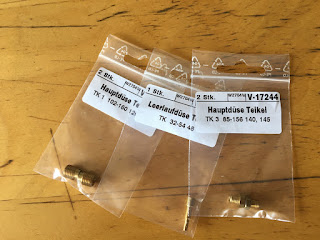As a rider of a XV 750/920/1000/TR1 you know these, even though they normally come with a plug at the end of the cables:
As you might have guessed, they are no longer available. Stock coils have a primary resistance of around 3 Ohm +/- 10% and a secondary resistance of around 8.5kOhm. Armed with these values I started shopping around and found the coils out of a GPZ500, which come it at the same specs, but are physically smaller and still have detachable leads.

So why do all this? Firstly, nope the coils on the Tractor are still fine, but the coil-on-plug coils on the turbo are a bit dubious and I plan on reviving that thing in the coming months and once I get started on tuning the carb and ironing out all the other bugs the old girl has, I want to be sure that I am not also going to chase some spark issues.





















